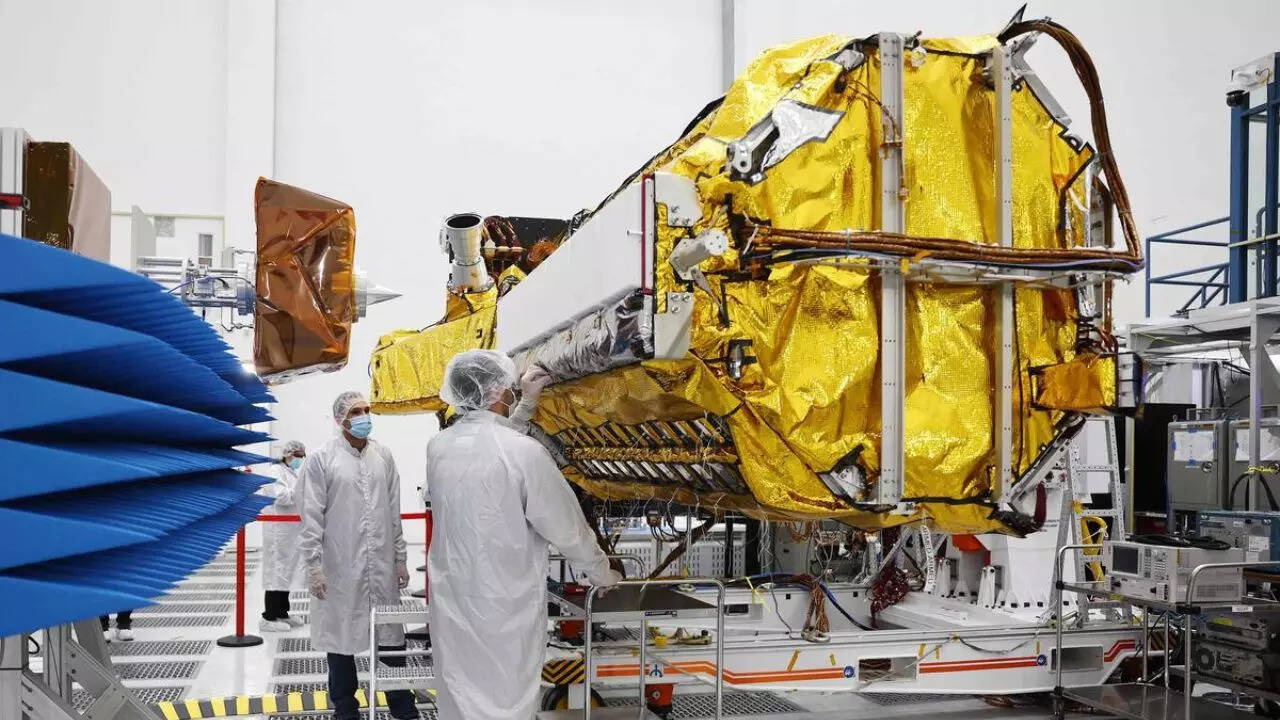The countdown has begun for the launch of NISAR, a groundbreaking Earth observation satellite jointly developed by NASA and ISRO. Slated for liftoff on July 30, 2025, at 5:40 PM IST from Sriharikota, the satellite represents a landmark in Indo-US space collaboration. Weighing 2,392 kg and carrying a price tag of $1.5 billion, NISAR is the most expensive Earth observation mission ever launched. Using a first-of-its-kind dual-frequency radar system, the satellite aims to deliver detailed, high-resolution imagery of the Earth’s surface every 12 days. It is designed to support scientists, disaster response teams, and policymakers worldwide.
What is the mission of the NISAR
NISAR, which stands for NASA-ISRO Synthetic Aperture Radar, will orbit Earth in a sun-synchronous orbit, capturing global surface data consistently under identical lighting conditions. Its primary goals include:
- Monitoring ecosystem changes and measuring forest biomass
- Tracking earthquakes, landslides, and volcanic deformation
- Studying glacier retreat and polar ice movement
- Measuring soil moisture and detecting groundwater variations
- Generating 3D surface maps of land and ice with high precision
The satellite’s L-band radar from NASA and S-band radar from ISRO allow it to see through cloud cover, vegetation, and darkness, enabling round-the-clock, all-weather observations.

Why does NISAR cost $1.5 billion?
NISAR’s hefty cost stems from its technological sophistication.
- It carries a 12-meter deployable mesh antenna, one of the largest in Earth observation history.
- The satellite integrates two advanced radar systems, requiring complex hardware and software integration without mutual interference.
- It offers centimeter-level precision, capable of detecting subtle ground shifts and environmental changes.
NASA provided the L-band radar, GPS, solid-state recorder, and antenna. ISRO developed the S-band radar, satellite bus, and launch systems, and will launch NISAR using the GSLV-F16 rocket.
Why is ISRO investing over INR 788 crore?
India’s contribution of INR 788 crore is a strategic investment with far-reaching benefits.
- Disaster response: Rapid detection of earthquakes, floods, and landslides could help save lives and infrastructure.
- Agriculture and water management: Accurate data on soil moisture and crop health can inform drought mitigation and boost food security.
- Climate monitoring: Continuous tracking of forests, glaciers, and wetlands enhances climate resilience.
- Technological advancement: Developing and operating dual-band radar technology strengthens ISRO’s future missions.
- Global data access: All NISAR data will be freely available worldwide, enhancing India’s standing in global Earth science.
The bigger picture: A symbol of international collaboration
NISAR exemplifies the success of long-term technical cooperation between NASA and ISRO.
- It showcases a trusted partnership in cutting-edge space technology.
- It positions India as a global leader in Earth observation.
- It opens doors for future joint missions and high-tech space ventures.
NISAR is more than just a satellite. It is a symbol of scientific ambition, global cooperation, and a step forward in understanding our rapidly changing planet. With unmatched capabilities and broad practical applications, it is expected to deliver insights that far exceed its financial cost. As India takes the lead in launching the mission, the world watches closely, anticipating a transformative leap in Earth science and climate preparedness.


